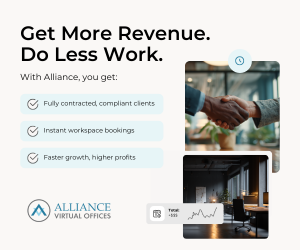- Strategic succession planning forms the foundation for leadership continuity and prevents succession crises.
- A robust leadership pipeline promotes organizational stability, improves employee engagement, lowers recruitment costs, and supports internal mobility.
- AI can enhance leadership development by personalizing learning, optimizing decision-making, and identifying potential leaders to create a sustainable leadership pipeline.
A record number of CEOs have departed U.S. companies in 2024. They’ve quit, been ousted, and even shockingly killed.
Between these 1,991 CEO exits and the hundreds of thousands of layoffs this year, many businesses are floundering as extended vacancies leave teams adrift or interim replacements struggle to pick up where the previous leaders left off.
Ultimately, though, these issues are avoidable with proper forethought.
The Importance of Succession Planning
Leadership pipelining, or succession planning, is a strategic process that identifies critical positions within an organization and develops action plans to prepare individuals to step into those roles.
Without effective leadership planning, organizations risk facing significant succession challenges — especially if a new leader needs to be urgently appointed.
A robust leadership pipeline is essential for managing immediate transitions and ensuring long-term organizational stability.
A leadership pipeline offers several benefits, including enhanced employee engagement and retention. A recent global analysis reveals that 76% of Gen Z and 60% of those under 40 view career development as essential to engagement.
94% of all employees would stay longer at a company that invests in their career development.
94% of all employees would stay longer at a company that invests in their career development. Strategic succession planning can, therefore, combat employee disengagement, reduce turnover, and provide a clear leadership development pathway.
From a financial perspective, a well-established leadership pipeline can reduce recruitment costs by balancing internal mobility with external hiring.
It also mitigates the risk of talent shortages and hiring mismatches.
Promoting leaders from within helps retain valuable business knowledge, as internal candidates are already familiar with the organization’s systems, values, and processes.
Additionally, an effective leadership pipeline can boost an organization’s reputation by demonstrating its commitment to nurturing and promoting talent internally.
However, establishing a leadership pipeline is not without challenges.
Many organizations struggle to define what “good leadership” looks like, making it challenging to retain potential leaders. Often, the talent needed is already within the organization, but leadership teams cannot identify and develop these employees.
A Leadership Success Profile (LSP) is an assessment tool for defining and recognizing potential leaders. By utilizing an LSP, organizations can build a solid leadership pipeline and ensure that qualified candidates are ready to step into leadership roles as and when required.
The Challenge of Closing Leadership Pipeline Gaps
The challenge of closing leadership pipeline gaps is becoming increasingly urgent as organizations grapple with persistent skills shortages and the demand to sustain performance amid changing work dynamics.
77% of organizations report difficulties securing high-quality leadership, and 63% of millennials believe their leadership skills are underdeveloped or underutilized.
Investing in leadership development and promoting a culture of continuous learning at work is vital to bridge these gaps.
According to Ricci Masero, an EdTech-focused Manager at Intellek, a strategic, future-focused approach is essential for developing a diverse pool of leaders capable of driving business success.
Masero emphasizes the importance of considering industry trends and leveraging AI-powered talent analytics to enhance precision and accelerate leadership readiness.
As businesses adjust to fast-paced digital transformation, the demand for leaders with qualities such as agility, empathy, and technological proficiency continues to grow.
However, many organizations still rely on outdated leadership models prioritizing status over substance, exacerbating gaps in leadership pipelines.
This misalignment between leadership and digital goals can hinder a company’s ability to capitalize on technological advancements.
For instance, businesses may invest in new technologies but fail to integrate them effectively due to leadership’s lack of strategies for adopting digital tools. This results in missed opportunities, slower technology adoption, and an inability to adapt to market changes.
Talent development plays a pivotal role in addressing leadership gaps.
Yet, many organizations struggle to identify high-potential employees capable of assuming leadership roles, particularly in industries experiencing rapid change.
Effective succession planning — through a strategic approach that involves defining, assessing, and developing leadership potential in advance — can help mitigate this issue.
Additionally, promoting diversity within leadership teams is essential for creating resilient leadership pipelines.
Research shows that companies with gender-diverse leadership teams tend to perform better financially and attract a broader talent pool, providing more opportunities to identify future leaders.
By promoting gender parity, organizations can build a more sustainable leadership pipeline with the capacity to guide them through continuous change and potential disruption.
Building a Leadership Pipeline from the Ground Up
Developing a seamless leadership pipeline from the ground up requires resilience, continuous learning, and proactive support systems to help new leaders confront challenges.
In the Allwork.Space Future of Work Podcast Navigating Leadership Shock: How to Regain Control, Pete Steinberg, President of Innovative Thought, highlights the concept of “leadership shock”— the unexpected and overwhelming challenges new leaders often face.
He underscores how unprepared leadership pipelines exacerbate these struggles, especially during sudden transitions or when responding to complex organizational demands.
Leadership pipelining, or succession planning, addresses these challenges through strategic investment in internal talent development.
By identifying critical leadership skills, assessing teams for these capabilities, and addressing gaps, organizations can build a talent continuum of employees at various stages of readiness.
Unlike a static talent pool, which comprises individuals at similar levels of preparation, a pipeline acknowledges that some candidates are ready to lead immediately — while others require further development.
To ensure high potential leaders progress consistently, organizations must provide targeted learning experiences and actively facilitate their growth to create a robust and adaptive leadership pipeline.
Five Strategies to Bridge Leadership Pipeline Gaps
Adopting these five strategies can ensure a steady flow of capable leaders and address gaps in leadership pipelines:
1.Identify Potential Leaders Early
- Talent Spotting: Implement structured programs such as continuous performance reviews, 360-degree feedback, and employee assessments to identify high-potential talent at all levels.
- Diversity and Inclusion: Build a talent pipeline that prioritizes diverse candidates to bring varied perspectives to leadership roles.
2.Develop Structured Leadership Programs
-
- Training and Development: Create programs focused on specialized leadership skills such as strategic thinking, decision-making, and emotional intelligence.
- Mentorship and Coaching: Identify experienced mentors capable of offering valuable guidance, support, and real-world insights, and pair them with emerging leaders.
3.Leverage AI-Powered Leadership Development
-
-
- Personalized Learning: Use AI to analyze learning styles and performance data, enabling tailored development plans with course recommendations, books, and other resources.
- Predictive Analytics: Implement AI tools to identify high-potential employees by analyzing data on performance, learning agility, and behavioral traits.
-
4.Create a Bottom-to-Top Leadership Pipeline
- Entry-Level Programs: Introduce management skills training early in employees’ careers, incorporating it into onboarding to develop leadership potential.
- Mid-Level Development: Offer cross-functional project opportunities and leadership roles for mid-career employees.
- Executive Leadership Programs: Provide senior leaders with advanced training, executive coaching, and strategic leadership experiences.
5.Embrace Continuous Evaluation and Improvement
- Feedback Loops: Regularly gather feedback from leadership program participants to adapt and improve offerings.
- Performance Metrics: Track program effectiveness using data-driven key performance metrics.
How Can AI Support Leadership Development?
“The future of leadership development is a combination of creative strategy, human intuition, and, yes, a little bit of artificial intelligence (AI). It is no longer simply about handshakes and annual performance evaluations,” said Sahina Ibrahim, Founder of Nuhr Home.
AI is revolutionizing leadership development by transforming traditional approaches into personalized, data-driven strategies.
Sahina Ibrahim, founder of luxury brand Nuhr Home, likens AI to a “high-tech crystal ball,” capable of identifying hidden talent, recognizing skill gaps, and predicting future leaders.
However, Ibrahim emphasizes that while AI excels in data analysis and pattern recognition, it cannot replace the human touch required to discern the intangible qualities that signal true leadership potential.
AI can create engaging, customized leadership programs by analyzing individual strengths, weaknesses, and development needs.
Real-time feedback provided by AI tools helps leaders refine their communication, decision-making, and self-awareness — fundamental ingredients of effective leadership.
Predictive analytics further supports identifying high-potential talent by assessing performance and engagement data, enabling organizations to proactively build leadership pipelines and prepare emerging leaders for future roles.
AI’s influence extends to developing essential soft skills such as emotional intelligence, empathy, and conflict resolution through realistic simulations. It also reduces recruitment and talent management biases, strengthening diversity and inclusion within leadership teams. Additionally, AI streamlines administrative tasks to enable human coaches to focus on impactful mentoring sessions.
By integrating AI into leadership development, organizations can build diverse, adaptable leadership pipelines and position themselves for long-term success.


 Dr. Gleb Tsipursky – The Office Whisperer
Dr. Gleb Tsipursky – The Office Whisperer Nirit Cohen – WorkFutures
Nirit Cohen – WorkFutures Angela Howard – Culture Expert
Angela Howard – Culture Expert Drew Jones – Design & Innovation
Drew Jones – Design & Innovation Jonathan Price – CRE & Flex Expert
Jonathan Price – CRE & Flex Expert












